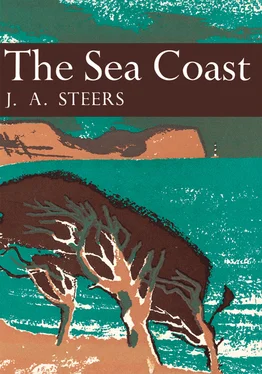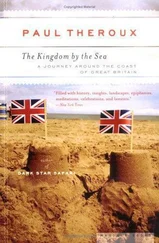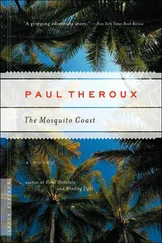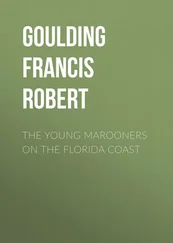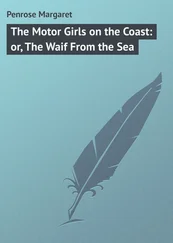It is only on the east coast, more especially between Flamborough Head and the Thames, that there is little, if any, relation between coastal form and tectonic structure. Holderness and eastern Lincolnshire are almost entirely formed of drift deposits. Glacial beds together with the soft crags of Tertiary age make up most of the coast of Norfolk and Suffolk. The Essex coast, consisting of alluvium and recent deposits resting on London Clay, is similar, except that it may be argued that the folding of the London Basin has been the main factor in producing the underlying structure of the Eocene clays.
On the west the coastlands of Lancashire and Cheshire show little or no direct relation to structure. Apart from the cover of blown sand and drift deposits, the solid ground consists mainly of Permian and Triassic beds banked against the older formations, which at Rossendale and Bowland push south-westwards as anticlinal ridges.
In later chapters we shall see how greatly ice deposition, and fluctuation of sea level, have affected the coastline, and in Chapters 8and 9there are references to the warping and other movements which have helped to shape it. In this chapter, an attempt, all too brief, has been made to show how tectonic structure has left its mark—why, in some parts like Cardigan Bay, or the coast between Weymouth and Beachy Head, the trend of the rocks is approximately parallel to the coast, whilst in others, e.g. Banffshire and Western Pembrokeshire, the trend is at right angles. Factors of this kind have much influence on coastal scenery; in the one case the same bed or beds may form the cliffs for long distances, in the other the folding brings many different beds close together and the differential erosion of the sea produces a variety of effects.
The older and harder rocks are in the north and west of Great Britain, and this, taken into consideration with the folding and other movements to which they have been subjected, is the cause of the profound contrast between the north and west and the coast between Tees and Exe, which is formed of soft and often very recent beds. The soft nature of the rocks abutting on the south-eastern coasts is an important, but by no means the only, reason for the great development of shingle spits and other shore forms found there.
For further reading on the subject matter of this chapter:
L. D. STAMP, Britain’s Structure and Scenery, 1946.
A. E. TRUEMAN, The Scenery of England and Wales, 1938. (Also in Pelican Books.)
L. J. WILLS, The Physiographical Evolution of Britain, 1929.
1 Mems. Geol. Surv ., Scotland, Sheet 5, Kirkcudbrightshire; J. Horne et al 1896 . “So rapid are the folds that upwards of sixty anticlines and synclines have been mapped between Corsegard Point and Knockbrex, a distance of one and a quarter miles.”
THE MOVEMENTS OF BEACH MATERIAL
THE MOST casual acquaintance with the coast of this country reveals the fact that lines of cliff and beach, capes and headlands standing out into deep water, bays with sandy beaches, and large expanses of shingle are common and repeated features.
In the first place it is important to realise that beaches are not permanent. That this is so is perhaps best seen during a storm which may remove the whole of a particular beach. If the place where it formerly stood is then examined it will be realised that the materials composing the beach rest on a platform cut in whatever rock may be present. Sometimes, in more sheltered places, the sands and gravels may rest on a slope or ledge of rock hardly if at all modified by marine action, but in the more open or exposed localities the platform under the beach is an erosion product. Beaches may also have the form off-shore bars (q.v.).
The sands, gravels, and coarser materials making the beaches are primarily formed by the erosion of some pre-existing rocks. It may be that the cutting of the platform itself is the main source of the material resting on it. Frequently, however, the beach material of a particular locality has migrated to that place from elsewhere. Let us see, therefore, how material moves alongshore. There are two main ways: by beach drifting and by currents, and each needs careful attention.
On an open beach it is often noticeable that waves do not break directly parallel with the trend of the coast, but approach at an oblique angle. If their action is watched, it is plain that as the wave breaks it sends rushing obliquely up the beach a mass of water called the swash or send. This water carries stones and smaller material with it, which move up the beach in the same direction as the swash. Where the swash dies away, the water that has not percolated downwards returns directly seawards.
FIG. 2 Diagrams showing the drift of shingle along a shelving beach
It, too, carries back some material, and the observer may notice that stones moved obliquely up the beach by the swash, may return directly down with the backwash. In short, any one pebble has advanced sideways from its original position along a path resembling a parabola (Fig. 2). All sand and gravel capable of being moved by the waves is similarly treated, and between low and high water a considerable extent of beach may be affected, depending chiefly upon the slope of the beach and the range of the tide. After high water much material is left stranded on the upper parts of the beach, and will remain there until the next high water. Since in most places the tides run through a fortnightly cycle it may happen that during the period from neaps to springs a great deal of material is swept to the top of the beach.
This introduces another point. Many of our beaches are sandy in their lower parts, although there may be a good deal of shingle higher up. Even on an entirely shingle beach, larger stones are often commoner on the higher parts. This follows largely from the facts already given; the swash is more powerful than the backwash, since the latter is weakened, especially on a pebbly beach, by rapid percolation. Moreover, the swash dashing up the beach can carry big stones with it—in storms even large boulders. But these stones, if in the front parts of the swash, are unlikely to retreat down the beach with backwash, partly for the reason just given, and partly because the retreating water, already lessened by percolation, has to start from zero and consequently has but little power. Of course, if the beach profile is steep, some stones may roll down again. The continuation of these movements results in the accumulation of the coarser stuff at the top of the beach. The consequence is that the shingle of many beaches is only worked upon by the waves at and near high water, and the highest shingle may be reached only in storms. On the other hand, sand and finer materials are carried seawards by the backwash. It follows that the general direction of travel of beach material by this process of beach-drifting depends a great deal on the relation and nature of the beaches to the prevalent and dominant winds. This can be readily illustrated. Along the Sussex coast the prevalent wind comes up Channel; this is also the dominant wind since it comes from off the greatest open space, or fetch, of water. Hence the beach material, in so far as this action is concerned, is moved eastwards. On the Suffolk coast the prevalent winds are the same, i.e. the westerlies, but they are certainly not dominant, and, in fact, come directly off the land and so have virtually no effect on the beaches. The important winds are those reaching the shore from the quarter between north and east, the quarter with the greatest expanse of open water. Hence these waves approach the Suffolk coast in such a way as to give a southerly movement of beach material. 1
The effects of this action have often been investigated, and the rate at which this shingle moves measured. The figures on the following page will serve as an example.
Читать дальше
